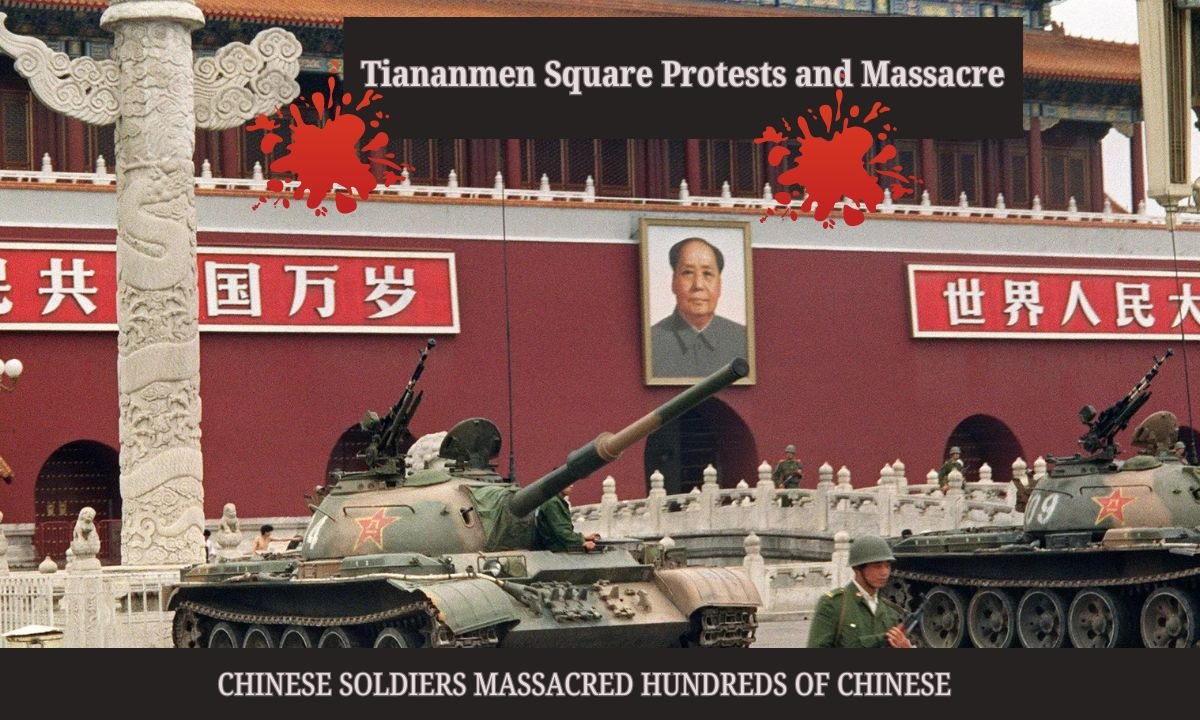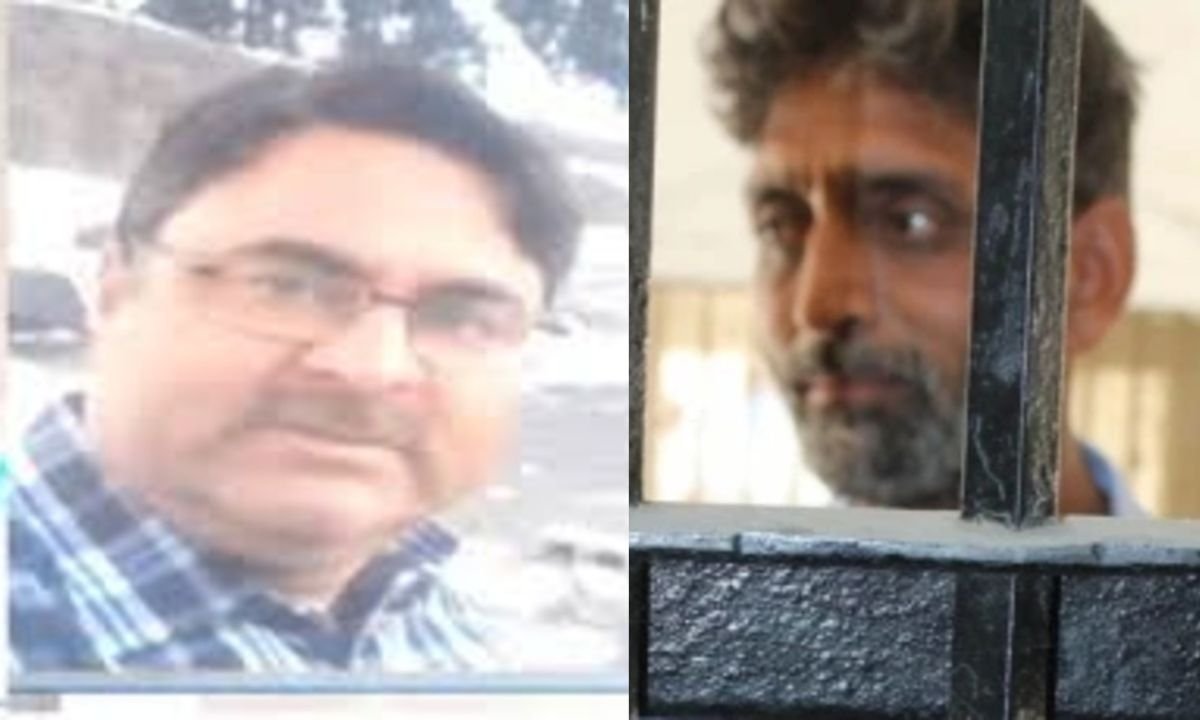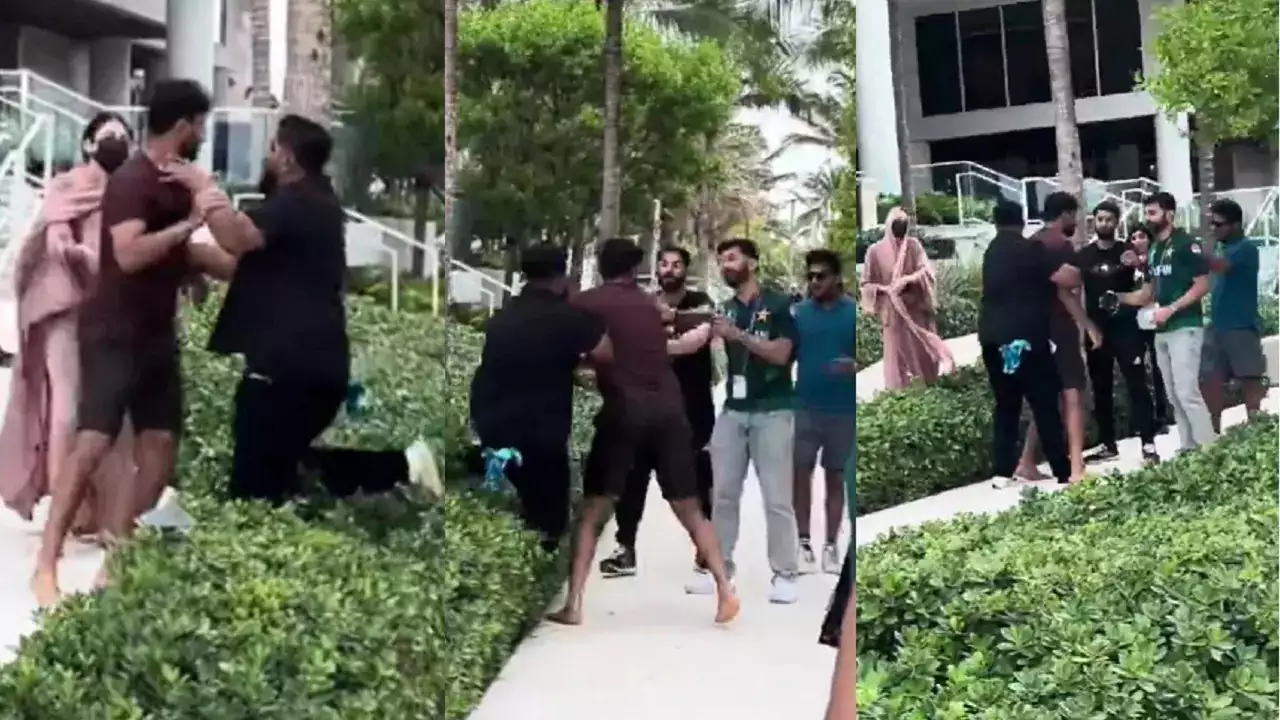Tiananmen Square Massacre: Hundreds of Chinese Killed
The Tiananmen Square Massacre is also known as the June Fourth Incident, which is a dark and terrible event in Chinese history. A pro-democracy student-led protest started in Tiananmen Square in Beijing on June 4, 1989.
The Chinese government CCP (Chinese Communist Party) violently stopped this protest by killing hundreds of civilians. This action shocked China’s politics, and it changed its relationship with the rest of the world in a significant way.
This event is also known as the Tiananmen Square Incident, the 89 Democracy Movement, or the Tiananmen Rebellion.

Background of Tiananmen Square Protests
The Tiananmen Square protests began in the mid-1980s during significant economic reforms led by Deng Xiaoping. Deng was chairman of the central military mission of China.
These reforms resulted in massive economic growth. However, they also led to corruption, inflation, and social inequality. It benefited the elite Chinese class but particularly affected the middle class in China.
It increased discontent among the public, especially among students and intellectuals. Hence, they called for political reform, more personal freedom, and an end to government corruption.

Moreover, the death of Hu Yaobang, a prominent CCP official in April 1989 served as fuel for protests. Hu was famous for his liberal, pro-democratic, and reformist ideas.
His death played an indirect but significant part in the 1989 Tiananmen Square protests. Hu was a pro-reform leader who pushed for political and economic reforms for the welfare of the Chinese people. His ideas attracted the Chinese, particularly students.
He died of a heart attack on April 15, 1989, when Chinese students gathered at Tiananmen Square to grieve his death. However, their gathering changed quickly into a larger peaceful protest movement from April 15 to June 4 for democratic reforms.
As the days went on, the number of protestors increased with people from all walks of life demanding democratic reforms.

Tiananmen Square Protests
Chinese students and other people protested against Inflation, corruption, graduates’ lack of ability to new economic changes, and restrictions on political participation.
Although they were disorganized and had different goals. The students demanded job opportunities, increased accountability, constitutional due process, democracy, press freedom, and freedom of expression.
However, workers participated in these protests due to concerns about inflation and social security protection. Despite their varied goals, Chinese workers voluntarily joined the student-led protest at Tiananmen Square.

Martial Law
A group of student protestors began a hunger strike on May 13, 1989, following a massive protest movement initiated on April 15. This move sparked similar strikes and protests in 400 cities throughout China.
As this protest movement progressed, the Chinese government became increasingly concerned about the protests, especially since the protests disrupted an official visit by the Soviet Union Prime Minister Mikhail Gorbachev on May 15.
The Chinese government had scheduled the welcome ceremony of PM Mikhail at Tiananmen Square. However, they conducted this ceremony at the airport instead of the square. The rest of his visit went smoothly.

Meanwhile, the government felt the urge to control widespread protests considering it a challenge against the writ of state. Following it, they declared Martial law on May 20, 1989, and moved 250,000 Chinese troops to Tiananmen Square.
Different media reports that over a million protestors gathered in and around Tiananmen Square by the end of May. Troops also moved there following commands of the ruling party CCP.
Chinese troops held daily marches with tanks and conducted monitoring. Their purpose was to threaten protestors so they abandoned the protest and vacated Tiananmen Square.

Tiananmen Square Massacre
When the initial deployment of tactics by the Chinese military failed to stop protestors, the government opted to turn peaceful protests into bloody scenarios.
The Chinese military and police invaded Tiananmen Square while shooting firearms into crowded protestors committing a massacre at 1 a.m. on June 4. Thousands of protestors attempted to escape the square, but some resisted, stoned the attacking forces and set fire to military vehicles.
According to some reporters and Western diplomats in Beijing, hundreds to thousands of protestors were assassinated in the Tiananmen Square Massacre.
Moreover, there are reports that Chinese armed forces arrested up to 10,000 Chinese. We roughly estimate 200-300 Chinese civilians died and approximately 500 were injured. The majority of dead and injured were students.

Tiananmen Tank Man
The image of an unknown man standing alone in resistance and blocking a column of Chinese tanks has left a long-lasting impact on the memory of several people worldwide. He is known widely known as the “Tiananmen Square Tank Man.”

Aftermath and International Response
International leaders across the world, including the US, UK, and France, strongly criticized and condemned the Tiananmen Square Massacre. Then-US President George H.W. Bush stated:
The United States of America strongly condemns the use of force by Chinese authorities against peaceful protestors. They grieve the awful loss of life and offer their heartfelt condolences to the victims and their families.
George H.W. Bush, Former US President
Margaret Thatcher was Prime Minister of the United Kingdom at that time. She stated:
They condemn the violent suppression of protestors and urge the Chinese government to respect its people’s human rights and pursue a peaceful resolution through dialogue.
Margaret Thatcher, Former UK President
However, the United States Parliament Congress imposed economic sanctions on China in less than a month for violating human rights.

Click here to read the updates on Nanjing Massacre: lakhs of Chinese killed and women raped
Chinese Government Viewpoint
The Chinese Communist Party maintained its hold on power and defended the massacre at Tiananmen Square. It presented the official view that a crackdown was required to maintain stability and avoid riots.
Deng Xiaoming, the supreme leader of the CCP and Chairman of the central military mission of China said:
This storm (military crackdown) was bound to happen sooner or later. The protests were the result of various social contradictions piling up over a long time. It provided an opportunity for a small number of instigated people to come to the front and create turmoil in the country.
Deng Xiaoming, prominent member of the CCP

However, it is significant to note that the Chinese government at that time and the present administration called the “Tiananmen Square Massacre” propaganda by Western countries.
They acknowledged the military crackdown on protestors at Tiananmen Square to maintain peace and order in the country but refused claims of massacre. According to them, they only used force on those who resisted military clean-up operations and rejected the casualties figures.
Conclusion
The Tiananmen Square Massacre is still a tragic and significant moment in Chinese history. It showed the intense struggle for democratic freedoms and the depths to which the Chinese government somehow controlled.
The influence of this incident is still felt throughout the world emphasizing the significance of human rights and democratic reform. It also showed the resilience of the Chinese people against a dictator regime and state-sponsored non-democratic values.
Such events offer an opportunity for tyrants to learn lessons and urge them never to repeat such oppressive actions against peaceful and unarmed civilians. May the departed souls find peace in eternal life!
Share this content:




Post Comment